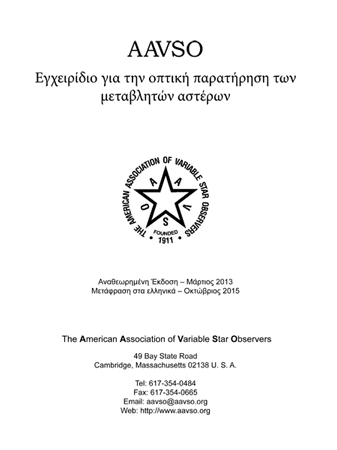DSLR Observing Manual in Polish
The AAVSO DSLR Observing Manual is now available in Polish!
Thanks to an excellent volunteer effort by Ewa Stokłosa and Ryszard Biernikowicz with editing help from Krzysztof Kida, we now have a beautiful translation of the DSLR Manual into Polish. We hope that our Polish-speaking members and observers will find this manual helpful and will share it with their colleagues.
To download a copy (free-of-charge), please visit the DSLR Observing Manual webpage.




